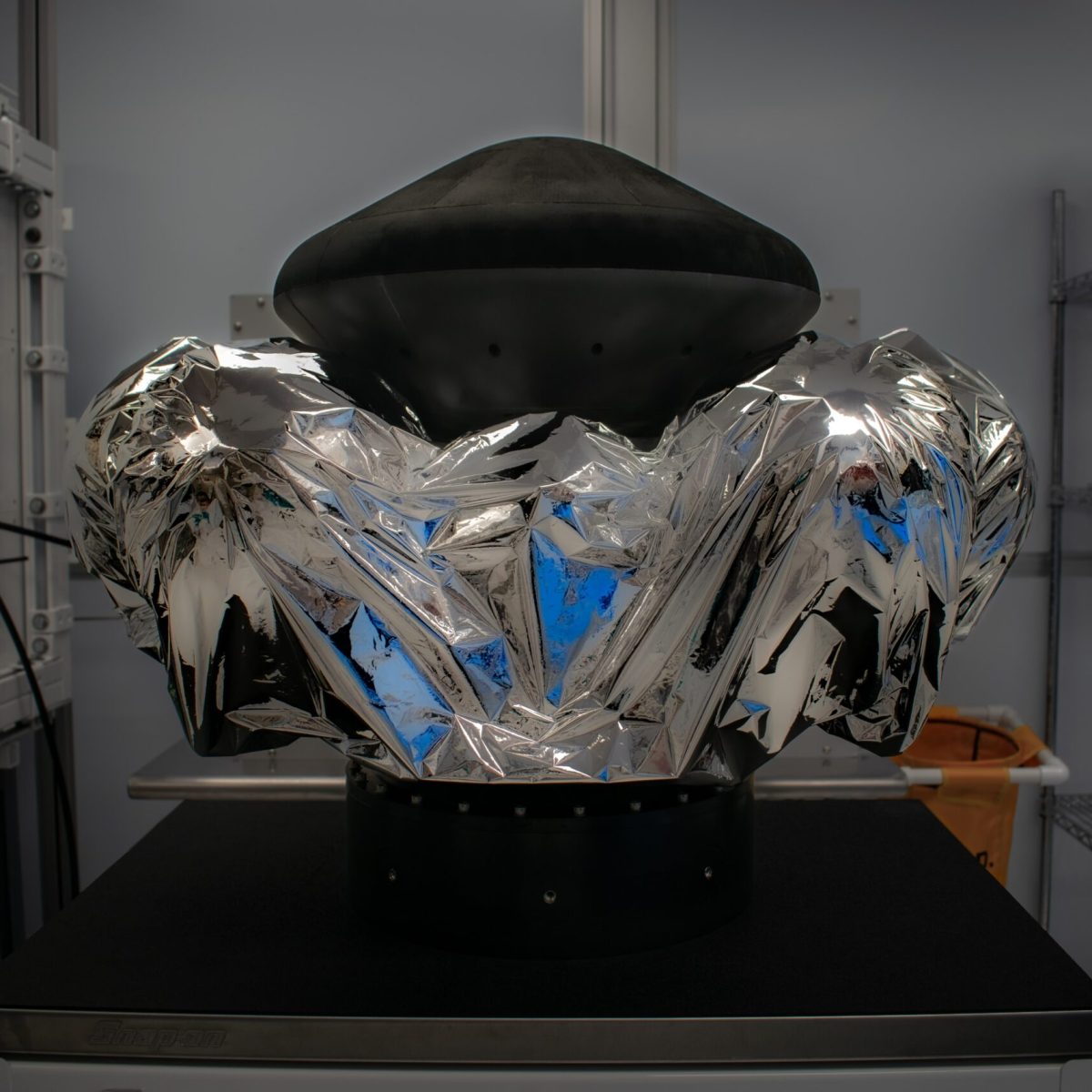MILAN — Inversion, a startup developing systems to return cargo from space to Earth, has received a license for its first mission launching in November.
The Los Angeles-based company announced Oct. 15 that it received a license from the Federal Aviation Administration’s commercial space transportation office for its Ray spacecraft, a technology demonstration mission launching on SpaceX’s Transporter-12 rideshare mission.
After spending at least a week in orbit, Ray will perform a series of burns to lower its orbit and reenter. The reentry capsule will deploy parachutes and splash down off the central California coast.
The mission is intended to test technologies the company developed for its plan to offer rapid, accurate return of cargo from orbit. “This mission is very much an internal technology development mission,” said Justin Fiaschetti, chief executive of Inversion, in an interview. “It’s to learn, to gather data, to test various different subsystems that we want to use on our larger vehicle, Arc.”
Arc is a larger vehicle intended to return cargo from space, with a first flight planned for as soon as 2026. “Arc is all about precision landing and delivery from space,” he said, with a goal of returning cargo within an hour and with a landing accuracy of six meters.
Ray is testing not just the technologies needed for Arc but also regulatory processes. Inversion is only the second company to receive an FAA reentry license under Part 450, a new set of regulations intended to streamline launch and reentry licensing.
However, many companies have struggled with the Part 450 licensing process. Varda Space Industries, the first company to get a Part 450 reentry license, launched without that reentry license in June 2023 and spent months working with the FAA and other agencies on a reentry license. It finally secured that license in February, landing a capsule carrying samples from a pharmaceutical experiment at the Utah Test and Training Range later that month.
Fiaschetti said Inversion spent 18 months working with the FAA on its reentry license. “We knew from day one this was going to be a key part of our product, getting regulatory approval,” he said. “Regulatory approval is a huge de-risk for the company.”
He said the company did not encounter any specific problems getting the license. “It is very much about kind of getting them comfortable and informed about our mission,” he said. He described a back-and-forth process with the agency, answering their questions on various aspects of the vehicle’s design and reentry plans.
That sometimes resulted in “redundant questions” from the agency, which he attributed to growing pains in the office as it scales up and deals with a growing industry. “I know there’s a lot of talk about how the FAA is slow and awful, or whatever,” he said, referring to criticism about FAA licensing delays, particularly with SpaceX’s Starship vehicle. “Our experience has been they just genuinely care about public safety and that is the reason they’re doing it: not because they don’t want commercial industry to thrive, but rather, they don’t want Los Angeles to be in danger.”
He noted Inversion designed its mission to minimize risks to the uninvolved public. The reentry will take place on the ascending node of its orbit from south to north, meaning the spacecraft will reenter over largely empty regions of the Pacific before splashing down off the California coast. The company did not have to change its mission profile during the licensing process.
The company, which raised a $10 million seed round in 2021, recently announced a Strategic Funding Increase (STRATFI) agreement with the Space Force’s SpaceWERX valued at $71 million, a combination of government and private funding to support work on reentry vehicles tailored for military customers.
Fiaschetti said Inversion has seen customer interest “across the board” for its reentry vehicles, but particularly from the military. The STRATFI award, he said, “is a great vote of confidence from our customers and provides us a lot of funding to go and do what we need to do.”



